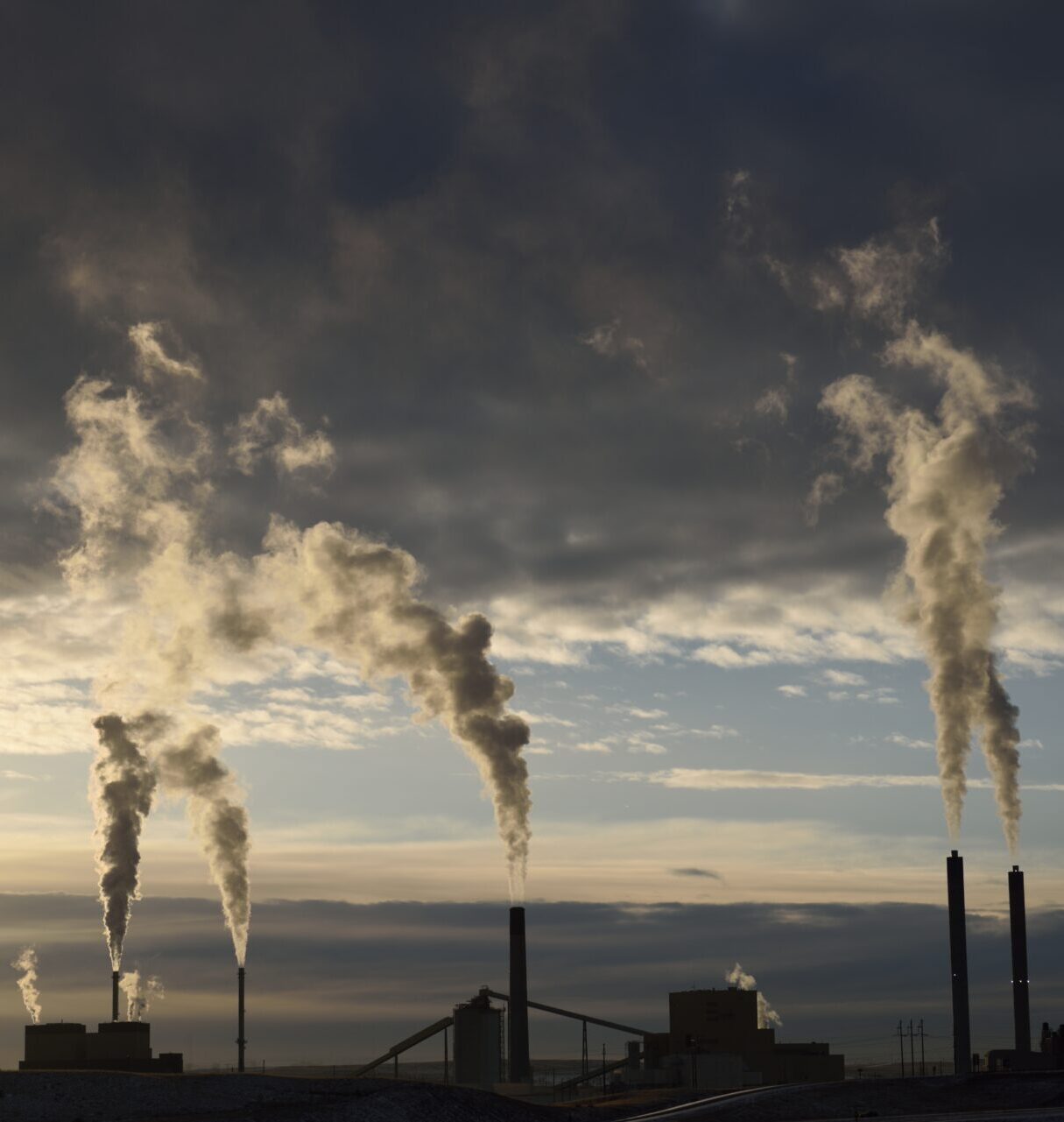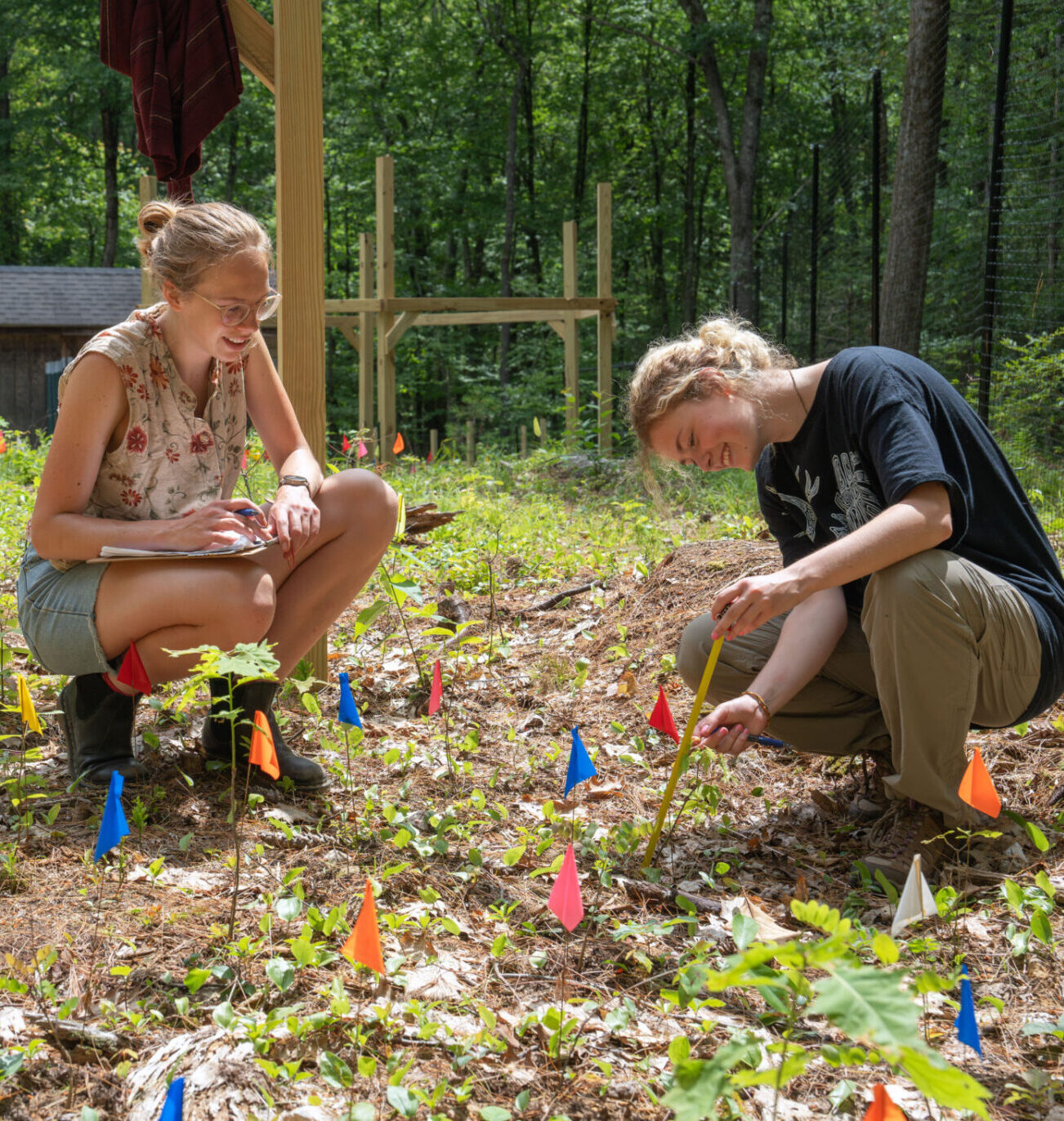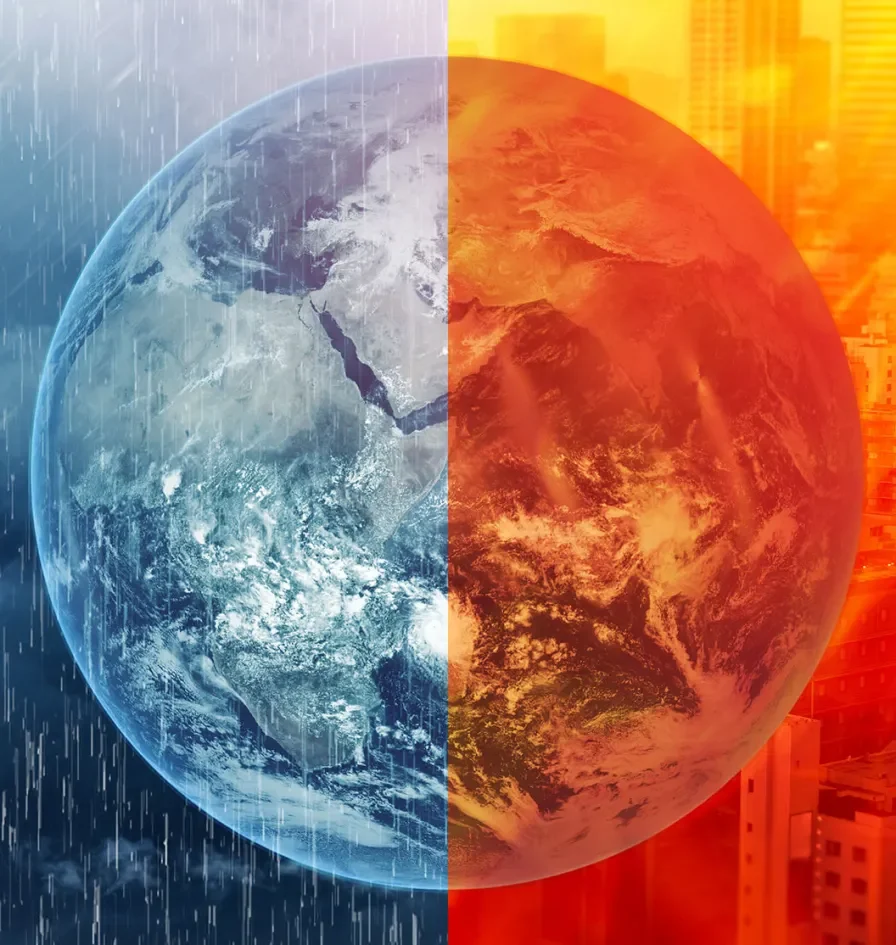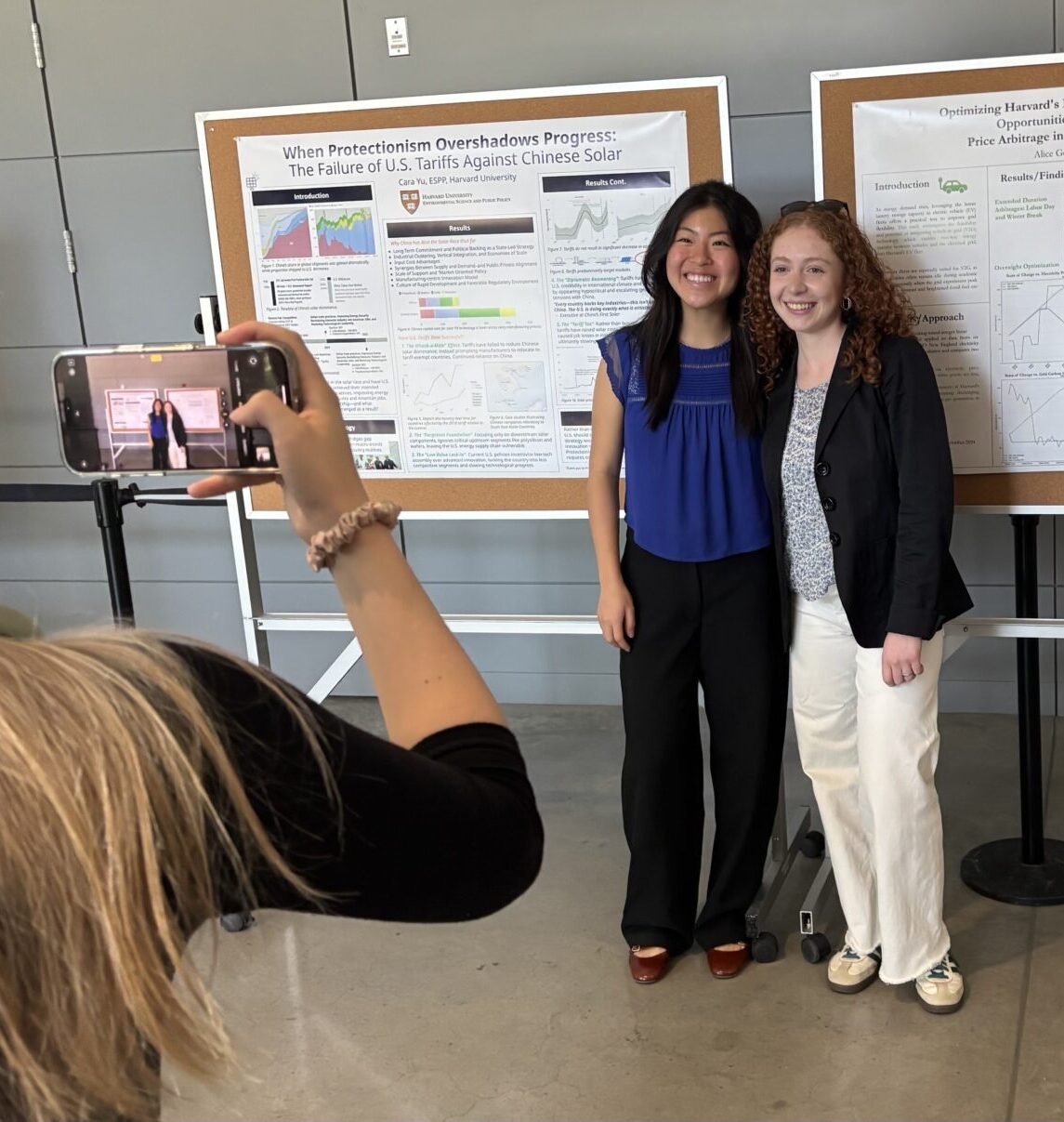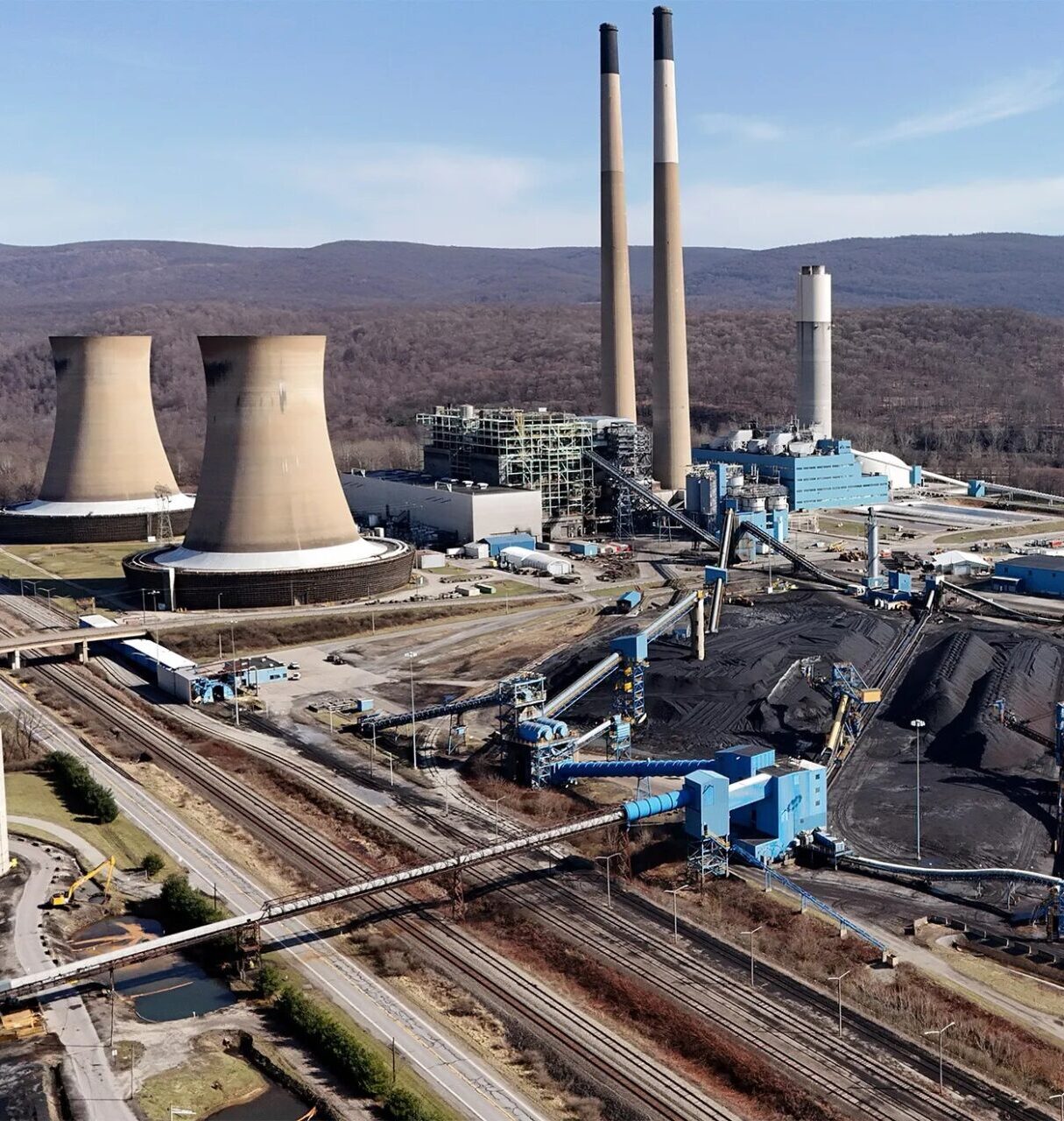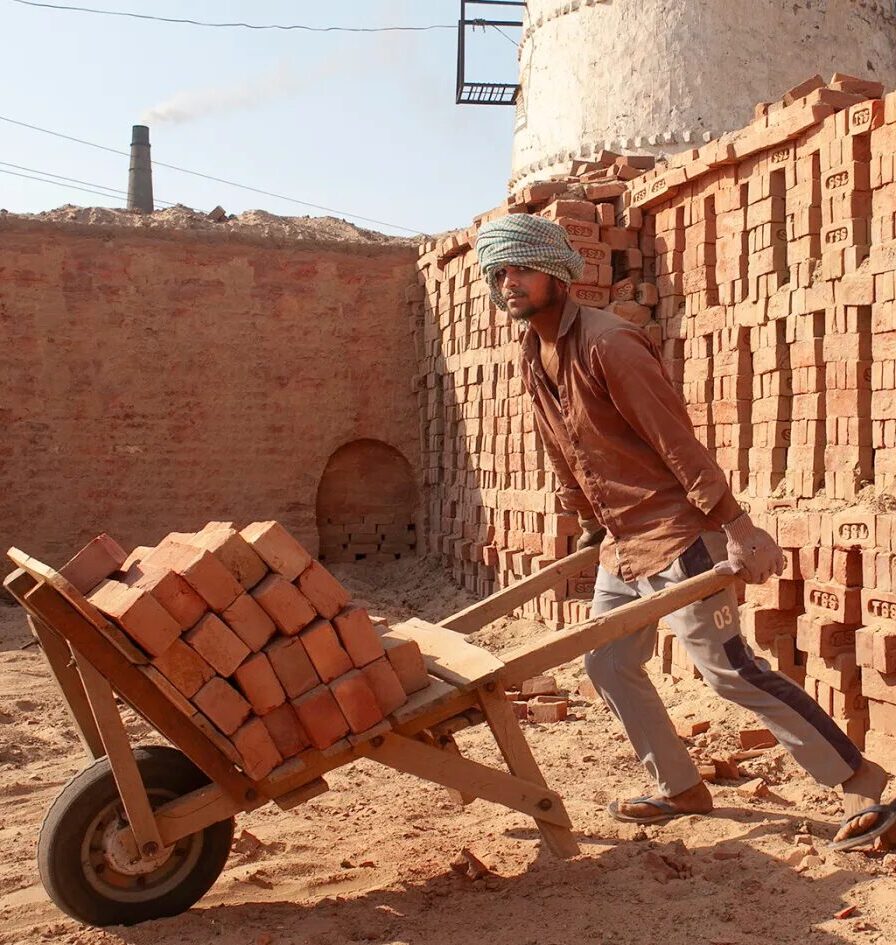Student Perspective: The Best Way to Spread a Climate Message? Wear It.
Written by: Lulu August (College ’26)
Revised by: Hans Bach-Nguyen (College ‘26) and José Quiroz-Yanez (College ‘25)
Human-caused environmental destruction and climate change are some of my generation’s most pressing challenges. Dr. Sparsha Saha’s new course, GOV 1318, The Great Food Transformation, opened my eyes to just how important the foods we choose to eat are to those challenges. Learning more about the connections between food and climate, I felt driven to get the word out to my peers.
Enter: digital backpacks. But I’ll get to that later.
In GOV 1318, Dr. Saha covers the “costs, politics, and solutions in our global food system, with a focus on the United States.” The innovative curriculum teaches students about food systems and the agricultural sector, areas that many feel do not receive the attention they should in conversations about climate change and environmental degradation.
The course, supported by Harvard’s Mindich Program in Engaged Scholarship, connects students with partner organizations through the University of California Berkeley Plant Futures Challenge Lab. Students in GOV 1318 engaged with partner organizations including Harvard University Dining Services, Greener by Default, and the Office of Senator Cory Booker.
To prepare students to work with these partner organizations, Dr. Saha taught about the ways food systems interact with our environment and climate. From those lessons, a few outstanding facts come to mind: meat and dairy-related agriculture take up 83% of global farmland and produce 60% of agriculture’s greenhouse gas emissions despite only accounting for 18% of global caloric intake; factory farming has accelerated the development and spread of zoonotic diseases; and 50% of slaughterhouse workers, people working in mentally and physically damaging environments, are immigrants.
Despite the significant impacts of meat consumption, regulation of meat producers is seldom on the policy agenda. And as individuals, making more informed food choices (if we have the resources and opportunity to) feels almost impossible. As GOV 1318 Teaching Fellow Mauro Morabito said, “We don’t pause and think and reflect and analyze the complex list of ingredients or the carbon footprint. We don’t always consider if a product is fair trade or if it’s local (or not) or if it’s seasonal, or not, or grown organically or not, or grown with regenerative agriculture or not. Honestly, it almost takes a Ph.D. dissertation to do this, no? And that’s almost by design.”
Which brings us to the question: how do you effectively spread awareness about an issue that is so essential, yet complicated?
To tackle this question, I was thrilled to be paired with the MIT Climate Clock Team. Our goal was to spark thought-provoking conversations about the food we eat by piloting two of the MIT Team’s projects on Harvard’s campus. The first project involved circulating LED backpacks with climate messages amongst students and the second was projecting climate messages onto the outside of Lehman Hall. I liked that the project was hands-on and community focused.
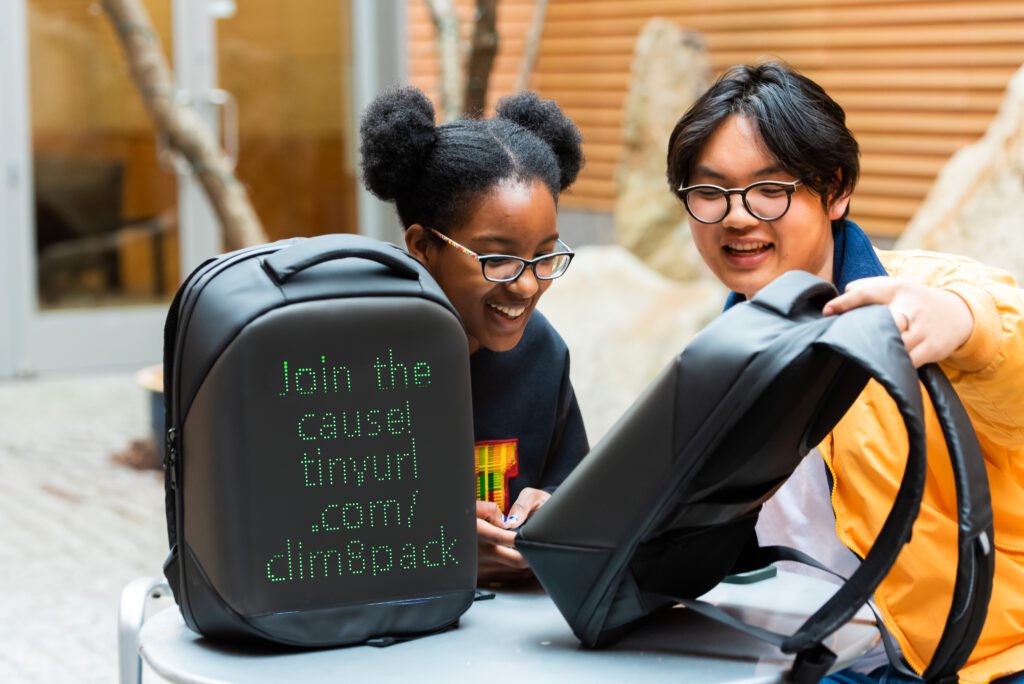
Getting started was a challenge. Finding a message that communicated the impact and urgency of food systems reform without provoking apathy proved difficult. “The coding of messaging and framing is so important: it is really an act of enabling ourselves and our students to reflect critically and more autonomously about choices,” Morabito said. Above all, it needed to be attention-grabbing. Using what we learned from class, we settled on nine simple and relatable messages from which volunteers could choose. The messages touched on topics ranging from the human carbon footprint to food inaccessibility.
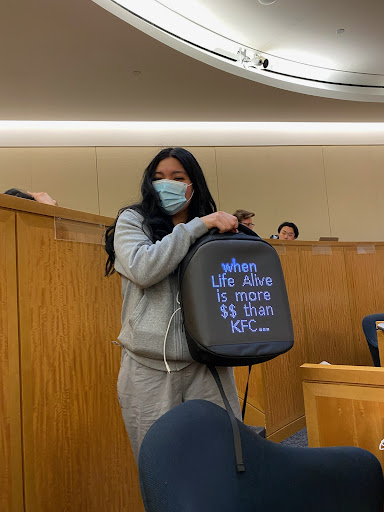
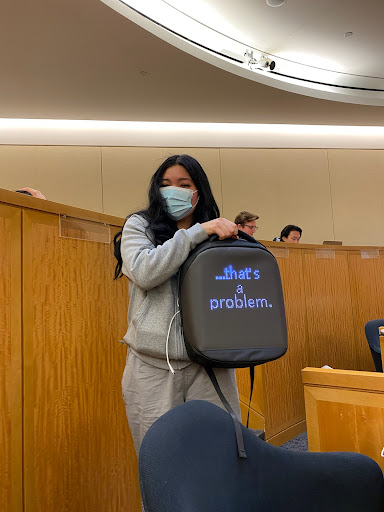
After finalizing the messages, our team launched the circulation phase during the first three weeks of April leading up to Earth Day. We worked with almost 40 volunteers, asking them each to wear a backpack for a few days before passing it off to the next person.
My experience wearing the backpacks was fun and light-hearted! I frequently heard comments like, “Wait, that is SO COOL!” or “Where’d you get that?” as I walked across campus.
To measure our project’s impact, we asked volunteers to fill out an anonymous feedback survey. Many noted that, unlike the dozens of posters the average student walks past across campus, the backpacks prompted conversations with everyone from university dining service staff to student peers pursuing completely different courses of study around campus.
Project volunteers expressed shock at how certain messages were more surprising to onlookers than they had expected. For example, during my volunteer period, I chose to display a message about the Paris Agreement 1.5 degrees Celsius target. Prior to this project, I had mistakenly assumed that this target was something that “most people” knew. Yet, many people stopped me to ask what “1.5” meant.
This experience led me to reflect on my own biases– how I predominantly engage in climate conversations with other students in my network who are passionate about environmental issues. Reflecting on this pattern, I now see how informational “echo chambers” play a role in my own life, and in the broader environmental space. This experience reinforced my understanding of how these echo chambers and statistics, inaccessible to peers who might not share environmental interests, can prevent us from reaching a broader audience and furthering climate awareness.
On the other hand, some volunteers questioned if the messenger outshined the message itself. Though the backpacks grabbed attention, that attention was sometimes more focused on the backpack than the climate message on it.
Reflecting on our project, I’m proud of the many productive, one-on-one conversations we sparked that more traditional climate communications might not have. More creativity in climate communications is needed to achieve our climate goals – even if it is as simple as (literally) carrying your values with you into every space you enter.
This project and article could not have been completed without all of our amazing volunteers and project participants (in no particular order); my teammates, José Quiroz-Yanez, Hans Bach-Nguyen, Mariana Haro, and Hannah Chang; Dr. Saha and the entire course teaching staff, our MIT Partners Susan Murcott and Anita Chandrahas; Jillian James; the Harvard Graduate School of Arts and Sciences; the Salata Institute for Climate and Sustainability at Harvard University; the Harvard Climate Coalition; and Eshan Vishwakarma from Outspoken Narrative.

